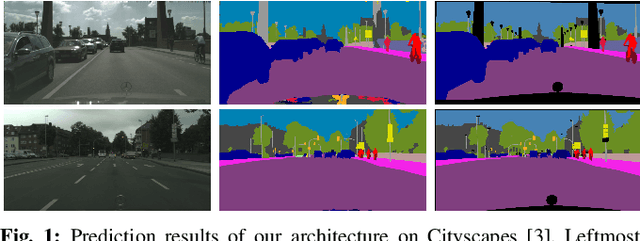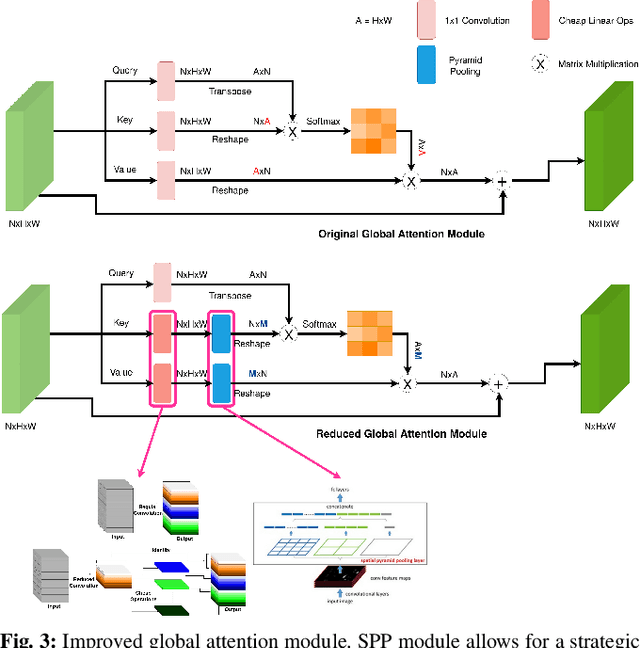Francesco Nex
TopoLiDM: Topology-Aware LiDAR Diffusion Models for Interpretable and Realistic LiDAR Point Cloud Generation
Jul 30, 2025Abstract:LiDAR scene generation is critical for mitigating real-world LiDAR data collection costs and enhancing the robustness of downstream perception tasks in autonomous driving. However, existing methods commonly struggle to capture geometric realism and global topological consistency. Recent LiDAR Diffusion Models (LiDMs) predominantly embed LiDAR points into the latent space for improved generation efficiency, which limits their interpretable ability to model detailed geometric structures and preserve global topological consistency. To address these challenges, we propose TopoLiDM, a novel framework that integrates graph neural networks (GNNs) with diffusion models under topological regularization for high-fidelity LiDAR generation. Our approach first trains a topological-preserving VAE to extract latent graph representations by graph construction and multiple graph convolutional layers. Then we freeze the VAE and generate novel latent topological graphs through the latent diffusion models. We also introduce 0-dimensional persistent homology (PH) constraints, ensuring the generated LiDAR scenes adhere to real-world global topological structures. Extensive experiments on the KITTI-360 dataset demonstrate TopoLiDM's superiority over state-of-the-art methods, achieving improvements of 22.6% lower Frechet Range Image Distance (FRID) and 9.2% lower Minimum Matching Distance (MMD). Notably, our model also enables fast generation speed with an average inference time of 1.68 samples/s, showcasing its scalability for real-world applications. We will release the related codes at https://github.com/IRMVLab/TopoLiDM.
Channel-Aware Distillation Transformer for Depth Estimation on Nano Drones
Mar 18, 2023Abstract:Autonomous navigation of drones using computer vision has achieved promising performance. Nano-sized drones based on edge computing platforms are lightweight, flexible, and cheap, thus suitable for exploring narrow spaces. However, due to their extremely limited computing power and storage, vision algorithms designed for high-performance GPU platforms cannot be used for nano drones. To address this issue this paper presents a lightweight CNN depth estimation network deployed on nano drones for obstacle avoidance. Inspired by Knowledge Distillation (KD), a Channel-Aware Distillation Transformer (CADiT) is proposed to facilitate the small network to learn knowledge from a larger network. The proposed method is validated on the KITTI dataset and tested on a nano drone Crazyflie, with an ultra-low power microprocessor GAP8.
Lite-Mono: A Lightweight CNN and Transformer Architecture for Self-Supervised Monocular Depth Estimation
Nov 23, 2022



Abstract:Self-supervised monocular depth estimation that does not require ground-truth for training has attracted attention in recent years. It is of high interest to design lightweight but effective models, so that they can be deployed on edge devices. Many existing architectures benefit from using heavier backbones at the expense of model sizes. In this paper we achieve comparable results with a lightweight architecture. Specifically, we investigate the efficient combination of CNNs and Transformers, and design a hybrid architecture Lite-Mono. A Consecutive Dilated Convolutions (CDC) module and a Local-Global Features Interaction (LGFI) module are proposed. The former is used to extract rich multi-scale local features, and the latter takes advantage of the self-attention mechanism to encode long-range global information into the features. Experiments demonstrate that our full model outperforms Monodepth2 by a large margin in accuracy, with about 80% fewer trainable parameters.
Self-supervised monocular depth estimation from oblique UAV videos
Dec 19, 2020



Abstract:UAVs have become an essential photogrammetric measurement as they are affordable, easily accessible and versatile. Aerial images captured from UAVs have applications in small and large scale texture mapping, 3D modelling, object detection tasks, DTM and DSM generation etc. Photogrammetric techniques are routinely used for 3D reconstruction from UAV images where multiple images of the same scene are acquired. Developments in computer vision and deep learning techniques have made Single Image Depth Estimation (SIDE) a field of intense research. Using SIDE techniques on UAV images can overcome the need for multiple images for 3D reconstruction. This paper aims to estimate depth from a single UAV aerial image using deep learning. We follow a self-supervised learning approach, Self-Supervised Monocular Depth Estimation (SMDE), which does not need ground truth depth or any extra information other than images for learning to estimate depth. Monocular video frames are used for training the deep learning model which learns depth and pose information jointly through two different networks, one each for depth and pose. The predicted depth and pose are used to reconstruct one image from the viewpoint of another image utilising the temporal information from videos. We propose a novel architecture with two 2D CNN encoders and a 3D CNN decoder for extracting information from consecutive temporal frames. A contrastive loss term is introduced for improving the quality of image generation. Our experiments are carried out on the public UAVid video dataset. The experimental results demonstrate that our model outperforms the state-of-the-art methods in estimating the depths.
CABiNet: Efficient Context Aggregation Network for Low-Latency Semantic Segmentation
Nov 02, 2020



Abstract:With the increasing demand of autonomous machines, pixel-wise semantic segmentation for visual scene understanding needs to be not only accurate but also efficient for any potential real-time applications. In this paper, we propose CABiNet (Context Aggregated Bi-lateral Network), a dual branch convolutional neural network (CNN), with significantly lower computational costs as compared to the state-of-the-art, while maintaining a competitive prediction accuracy. Building upon the existing multi-branch architectures for high-speed semantic segmentation, we design a cheap high resolution branch for effective spatial detailing and a context branch with light-weight versions of global aggregation and local distribution blocks, potent to capture both long-range and local contextual dependencies required for accurate semantic segmentation, with low computational overheads. Specifically, we achieve 76.6% and 75.9% mIOU on Cityscapes validation and test sets respectively, at 76 FPS on an NVIDIA RTX 2080Ti and 8 FPS on a Jetson Xavier NX. Codes and training models will be made publicly available.
 Add to Chrome
Add to Chrome Add to Firefox
Add to Firefox Add to Edge
Add to Edge